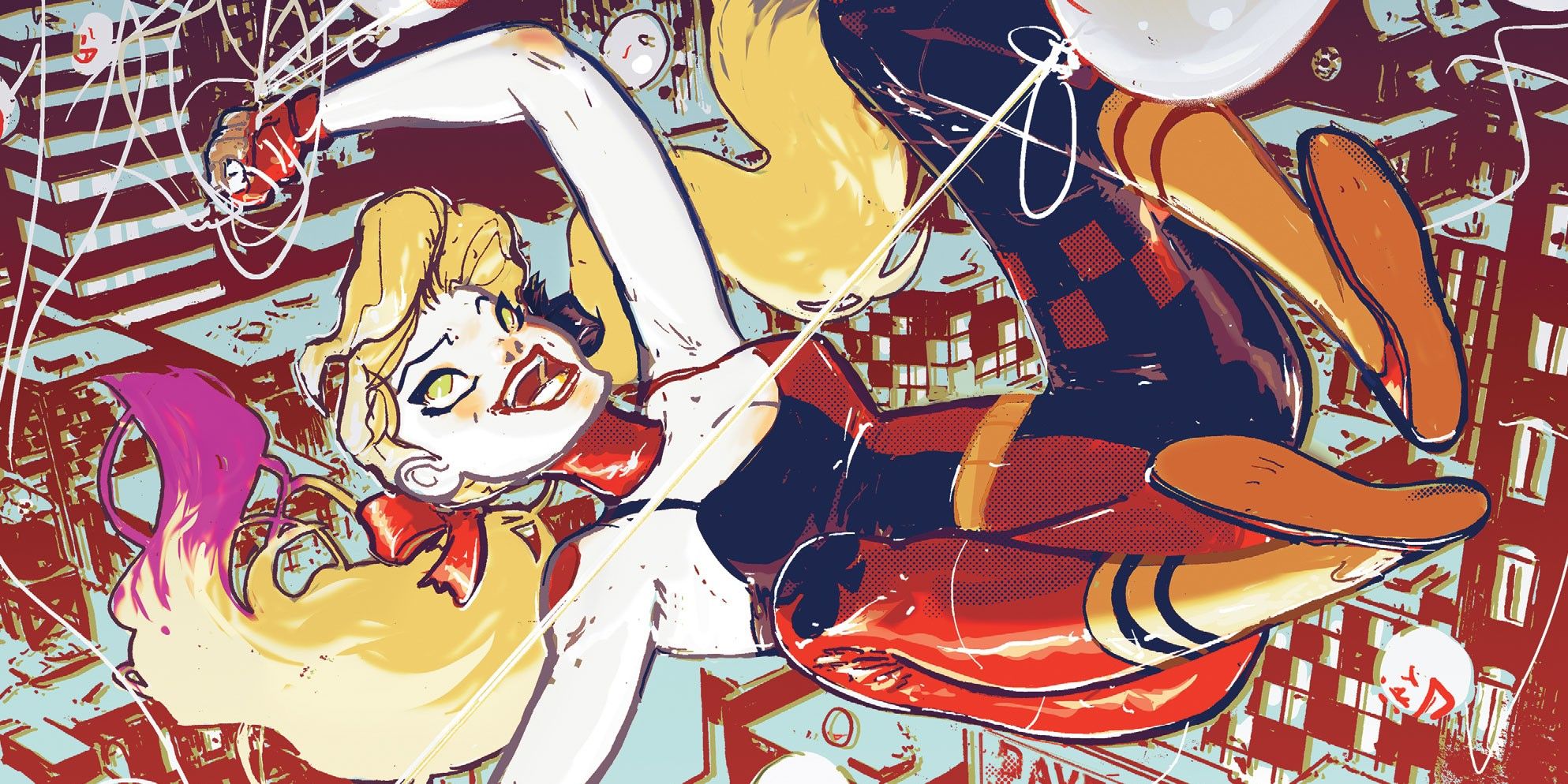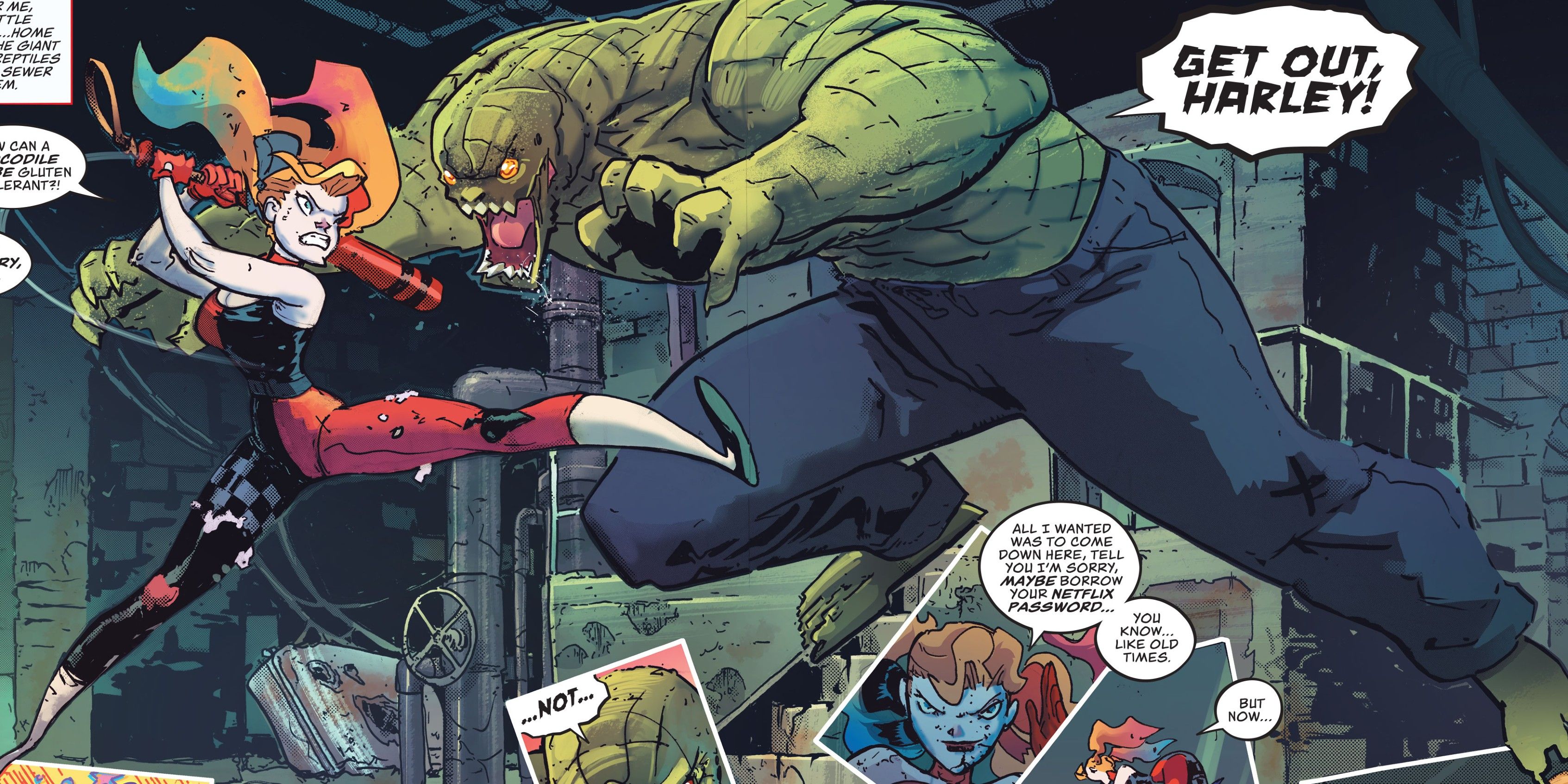The more things change, the more they stay the same, and for Harley Quinn, even a turn to the side of the angels can’t take away her self-defeating habits. Issue #1 of Harley Quinn is here, and Harley’s trying to make amends to each and every person she’s harmed in Gotham City. But, even with a (likely invalid) psychiatrist’s license, it looks like she’s going to have a hard time not stepping on her own feet. Reformed or no, Harley has always been her own worst enemy, and this new series highlights this tragicomedy in spades. She’s just a person who can’t get out of her own way, it seems.
The debut issue of this new ongoing series, written by Stephanie Phillips with art by Riley Rossmo, finds Harley picking up after the aftermath of Joker War. Now having settled in Gotham, unofficially joined the “Bat-Family” and had her criminal rap sheet wiped clean thanks to her time on the Suicide Squad, Harley’s ready to start fresh. And in this town, apparently starting fresh means hunting down supervillains who you’ve betrayed in the past and attempting to “make amends” by apologizing and swearing to have changed. It’d be a slightly more convincing act if she didn’t carry around a huge baseball bat. While her antics may be geared towards assisting her new ally, Batman, her… shall we call them… misconceptions on how to best facilitate this “healing” she so desires may spell disaster for this recent hero-turn.
The thematic undertone of this new series, awash with Rossmo’s zany, if not somewhat darkly cartoonish vision of Harley’s Gotham, is that Harley, while genuinely trying to make up for her criminal past, is still not quite the model of reform she’d like others to believe she is thanks to her precarious sanity. She still dissociates, engrossingly visualizing her past personality as she ponders pummeling a few Gothamites (in self-defense of course) and she still makes unwarranted demands of others such as when she requests the “Bat-check” from Batman (who now has lost his fortune). She also has problems in expecting too much of people, as will likely be the case with her new “sidekick” Kevin, a former Joker follower whom Harley (overly optimistically) hopes to transform from ugly duckling to beautiful swan. All of these personal foibles are likely going to catch up with her, sooner rather than later.
Phillips and Rossmo’s take sees a slightly more cartoonish perspective on the onetime Clownstress of Crime than has been portrayed previously, and one main strength of this book is that this perspective feels more in line with the character’s animated origins. Rossmo’s frenetic, quirky style feels like a more hallucinogenic, colorful turn on the old Timm-Verse DCAU aesthetic, and Phillips proves she’s more than capable of writing Harley with appropriate levity. There’s a deceptively deft balance that’s being walked in this book between the ultimate failure Harley is likely going to encounter in her quest to “heal” Gotham of the deep psychological wounds she’s helped inflict, and the humor that Harley’s manic brightness brings to the dark, stormy world of Gotham. If this team can successfully keep this balance as Harley becomes a more “Bat-centric” part of DC, then this series is going to take readers for quite the ride.
What likely elevates the quality of this team to the highest level would be Ivan Plascencia’s coloring. Often muted in darkness, there’s a certain vibrancy to the coloring, especially in the contrast between Batman and Harley, which profoundly supports what, in the final analysis, feels like a strong brew of character, story and style. Clearly inspired as a slightly off-kilter Batman: The Animated Series-esque romp, this is definitely a book to keep your eye on.
Will Harley’s mission to heal Gotham end in incarceration again? Harley Quinn #1 is on sale now wherever comic books are sold.


